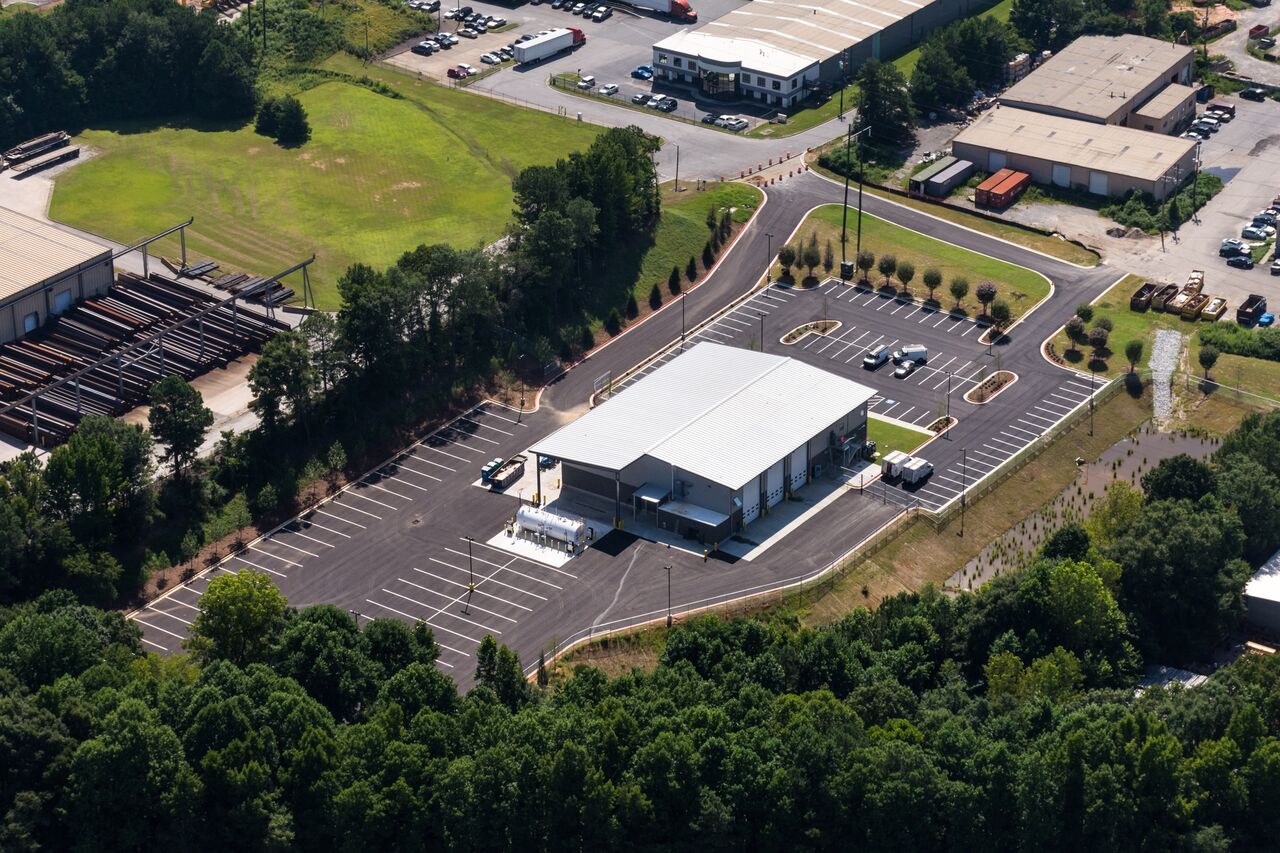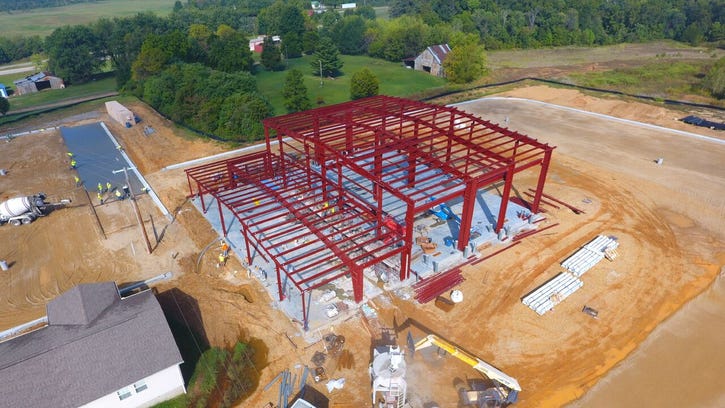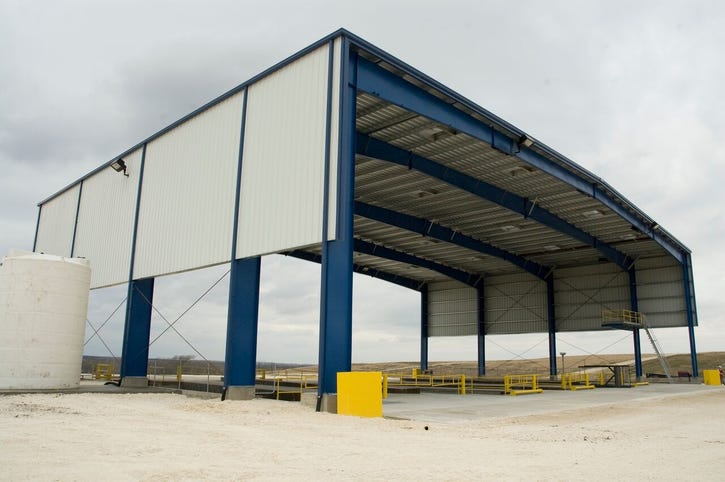Cambridge Designs Long-lasting Facilities for the Waste, Recycling Industry
A look at how the company designs safe, effective and efficient facilities for the industry.

Designing materials recovery facilities (MRFs), hauling facilities, transfer stations and other types of facilities for the waste and recycling industry is no easy feat. But Cambridge Companies, Inc., a company that provides high-quality design, consulting, construction and general contracting services to a wide range of industries, enjoys the challenge and has helped develop safe, effective and efficient facilities for the waste and recycling industry for 30 years.
Cambridge got its start in the industry in Chicago, mainly designing transfer stations before taking on other types of design-build projects like MRFs and hauling facilities. And over the last 30 years, the company has completed approximately 150 solid waste projects within the U.S., with more currently in the works.
The company, which handles new projects as well as remodels and expansions, often has multiple projects going on at once, all in different stages. And for Cambridge, it’s important that those projects are cost effective, efficient, safe and durable because they need to withstand the large equipment and vehicles that operate at the facilities each day, as well as adapt to the ongoing changes that happen within the industry.
“Clients often come to us with possible project ideas, and we take those ideas and develop conceptual plans, budget plans, site selection options, etc., to give them an overview of what is possible and what is not,” says Jeff Eriks, vice president of business development, marketing and customer experience at Cambridge. “We get a lot of the mom-and-pop companies in the industry coming to us for projects, and they have limited capital available. But we work with them to build facilities that fit their needs while remaining within their budget.”

For its design-build projects, Cambridge utilizes a seven-step process known as Cambridge’s Proven Process. The steps are as follows:
Initial contact. Cambridge completes an introduction, an overview of service offerings and processes and a layout of next steps.
Scoping. The company reviews the current state of the project and generates a project mission statement. It also creates solutions, budgets and schedules, discusses clients’ ideas and concepts and makes a decision on the direction of the project.
Design and permitting. Cambridge coordinates plans and meetings, meets agreed upon deadlines, submits bid, permit and construction drawings and works to obtain permits.
Procurement. The company ensures the client has ample coverage for their new facility, shows accurate comparison to reduce change orders during construction and plans a buyout meeting.
Construction. Cambridge makes sure the design for the facility is safety and quality driven, all parties are on the same page, the project is under budget and on time and the client will be satisfied with the end product.
Close out. The company gives the client as-built drawings and warranty books and also completes a project recap report to compare estimated and actual milestones and budgets.
Follow up. Cambridge conducts a six-month follow-up call to discuss the end product with the client. It also does a one-year walkthrough of the facility to learn what’s working and what isn’t. It then takes those lessons learned and applies them to other projects going forward.
While projects often vary in size and functionality, safety is always part of design development, according to Evan Williams, a project designer at Cambridge. Safety is one of Cambridge’s design objectives, and the company takes a number of approaches to increase the potential for a safe site.
For hauling companies, Cambridge aims to create separate entrances for personal vehicles and trucks as well as single-direction traffic indicators, ensuring that those two vehicles types aren’t sharing onsite circulation whenever possible. The company also creates clear pathways for workers to enter and exit their vehicles without having to bypass or walk around shop doors.
On the interior, Cambridge recommends adding a key card system or other secure system for employees to enter the various areas of the workplace. This helps visitors from wandering into the wrong area and discourages unnecessary foot traffic. In addition, the company recommends adding overhead lighting to highly trafficked areas and adding chains across the doorways.
For transfer stations, Cambridge once again aims to have separate entrances for personal vehicles and trucks as well as different areas for personal vehicles and trucks to tip their loads. It also incorporates single-direction traffic as well as overhead lighting for highly trafficked areas like the tipping apron.
For MRFs, the company also creates separate entrances for personal vehicles and trucks, which is especially important if the MRF has a visitor or education center where children and visitors come by busload to visit the space. Cambridge also aims to design break rooms and clear pathways on the second floor, so staff can safely enter and exit the sorting line and avoid potentially getting hit by a commercial vehicle, forklift or falling material.

“Designing with safety in mind is important, but it’s just as important to be forward thinking and forward looking because if we design for a client’s programmatic need right now, the client will be locked into that facility with little opportunity to grow,” says Williams. “If we get the client to identify what their business goals and needs will be five to 10 years down the line, then we can design with those goals in mind and make it easier for them to expand or make changes in the future.”
By thinking ahead, clients can avoid having to go through another permitting process for a minor expansion or modification, which is often a timely process, and save on design costs.
“Planning for the future adds very minimal costs to the initial construction,” states Williams. “It can be something as simple as saving an open space for additional parking spots, ordering additional metal beams, so you can add another one in the future, or running the plumbing lines a little further and capping them, so you don’t have to rip up the floor to extend your pipelines in the future.”

Cambridge works hand-in-hand with its clients to create and develop smart designs that meet their current and future needs. And currently, the company has a lot of exciting projects in the works.
Cambridge is working on developing two state-of-the-art MRFs, one on the East Coast and one in the Midwest, for a client that will sort municipal solid waste (MSW); completing modifications and expansions of an existing MRF on the West Coast; developing a large transfer station in the Midwest that will accept more than 4,000 tons of MSW per day and have a large baling and storage space for cardboard and fiber; developing a 20,000-square-foot transfer station in Houston; constructing a hauling facility in the Midwest; modifying maintenance shops for a company that supplies trucks for the industry as well as a hauling company in the Midwest; and more.
“It’s a busy time for us right now, and while a lot of our facilities may look simple on the surface, they feature a lot of finer details,” says Eriks. “They are designed with durability and performance in mind, and that’s where we stand out as a company. All too often, we go into facilities that need modifications and expansions and the designer who originally built the facility didn’t have any experience in the industry and didn’t understand the full needs of the facility. Experience makes a difference, and I can say that we have seen firsthand the sites and issues that arise in this industry and have built up a background to know what we should avoid in designing a facility for this industry.”
About the Author
You May Also Like




